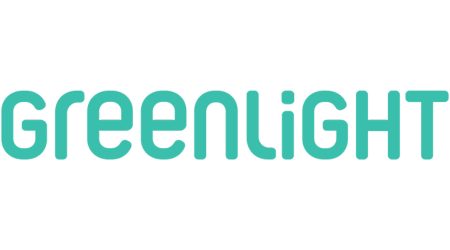Greenlight and GoHenry (now Acorns Early) are two of the best kids’ banking apps on the market. Both have strong parental controls, financial literacy features and a wide age acceptance range. While Greenlight has a little more to offer and is cheaper for larger families, GoHenry isn’t a chump.
GoHenry vs. Greenlight: A quick comparison
Acorns Early vs. Greenlight: Account options
GoHenry, now known as Acorns Early, has two plan options: Basic for $5/month and Family for $10/month. The only difference between Basic and Family is that Basic allows for one kid and Family allows for four kids. However, parents with an Acorns Gold subscription can get Acorns Early at no extra cost.
Greenlight has three plan options: Core for $5.99/month, Max for $9.98/month and Infinity for $14.98/month. All of Greenlight’s plans allow up to five kids, and the differences between the plans come down to features. Max and Infinity offer extra perks such as cashback rewards, higher savings APYs, purchase protection and identity theft monitoring.
Greenlight also doesn’t have any specific age requirements for kids, whereas Acorns Early requires kids to be 6 to 18.
Greenlight and GoHenry (Acorns Early) cost comparison
Greenlight and Acorns Early lack a free plan, but both kids’ debit cards offer a 30-day free trial before you commit. If you have multiple kids, Greenlight is the clear choice in terms of cost.
Pricing is similar, with Greenlight starting at $5.99 per month and GoHenry (Acorns Early) starting at $5 per month for their most basic plans. But Greenlight is the clear winner for families with more than one kid. Greenlight automatically offers up to five kids’ debit cards with a single plan. Acorns Early’s $5 plan only offers one card, and you have to upgrade to Family for more cards — and you won’t get any extra features with the Family plan aside from the ability to add more kids.
Acorns Early and Greenlight don’t have charge fees for ATM withdrawals. However, Greenlight does have a $3.50 card replacement fee.
Acorns Early and Greenlight’s parental controls
Like most kids’ cards, Greenlight and Acorns Early let parents view their kids’ transactions and get real-time spending notifications, and neither card allows overdrafts. Each has strong parental controls but Greenlight takes the win here, too.
Greenlight allows parents to set category- or store-level spending limits, and parents can even block entire categories. There are five categories: ATMs, gas stations, grocery stores, restaurants and online gaming. Parents can also set a limit for ATM cash withdrawals, per category or a specific store.
Acorns Early also allows for some custom spending limits, but it’s not as flexible as Greenlight. Acorns Early has three categories: High street (in-store), ATMs and online. You can set spending limits for each of these categories on a weekly spend limit, single spend limit and ATM withdrawal limits.
Which kids’ card has more features?
Greenlight has more features than GoHenry (Acorns Early). Greenlight’s features that GoHenry lacks include:
- Savings rewards
- Store- and category-level parental controls
- Cashback rewards (Max and Infinity)
- Identity theft, phone and purchase protections (Max and Infinity)
Both Acorns Early and Greenlight have granular chore and allowance tracking, though. With either kids’ card, parents can assign chores and choose to pay per completed chore, or have allowances delivered regardless of chore completion.
While Greenlight has more extra features, Acorns Early offers a few advantages over Greenlight. Acorns Early’s investing platform is automatically included in the Basic plan, whereas with Greenlight, you have to upgrade to Max or Infinity. And while Greenlight has some financial literacy education tools, GoHenry’s Money Missions feature interactive quizzes and videos where kids can earn points and badges.
Is Acorns Early or Greenlight safer?
Greenlight has more extra safety features.
With Greenlight Infinity, parents get safety features like family location sharing, SOS alerts and crash detection. There’s also phone, theft and purchase protection included. The SOS alerts automatically send an alert to emergency contacts and/or 911 with a swipe, and if the app detects a crash, it will automatically dispatch 911.
Both Greenlight and Acorns Early accounts have deposit insurance up to the typical amount of $250,000 per depositor under the FDIC. Each kids’ banking option also ensures that they do not sell your personal information to third parties, though with Acorns Early, you have to opt out of it. Also, Greenlight won’t track your family’s location without permission.
GoHenry (Acorns Early) vs. Greenlight: Which one’s better?
Greenlight is the clear winner. Compared to GoHenry (Acorns Early), Greenlight is more affordable for large families when looking at the most basic plan options, the spending limits are more customizable, and if you want to upgrade, parents will get a ton of extra safety features not available with GoHenry.
With the Greenlight Core plan, kids can also earn a 2% savings reward per year on balances up to $5,000 per family — GoHenry doesn’t offer savings rewards at all. Greenlight is also working on a new credit card, called the Family Cash Card, that will allow parents to add their kids as authorized users so they can build a credit history before they’re 18 years old.
Acorns Early is still a great option, though. With the Acorns Early Basic plan, you’ll automatically gain access to the investing platform, and it has chore and allowance tracking, custom spending limits and gamified learning. Additionally, if you have a Gold Acorns Checking account, you can get GoHenry (Acorns Early) for free.
Greenlight at a glance
Greenlight is better for large families, and if you can afford to upgrade to Infinity, you’ll get a ton of extra safety features, cashback rewards, savings rewards and an optional investing platform.
Pros
- Granular parental controls
- Up to 5 kids per plan
- No ATM fees
- No age requirements for kids
- Chore and allowances
- Investing, cash back, savings rewards and referral rewards
- Many safety features
Cons
- Unavoidable monthly fee
- Best perks require Max or Infinity
Acorns Early at a glance
Acorns Early (previously GoHenry) is a strong contender, but it falls short compared to Greenlight.
Pros
- Investing platform
- Wide age acceptance
- Chore and allowance features
- Gamified learning
- Free replacement debit card
Cons
- One kid per Basic plan
- Family plan up to four kids
- No savings or cashback rewards
- No store- or category-level parental controls
Alternatives to Acorns Early and Greenlight
Both Greenlight and Acorns Early (previously GoHenry) have an unavoidable monthly fee. If you need a free kids’ card, plenty of options are available.
- Chase First Banking. Powered by Greenlight, Chase First Banking has no opening deposit requirement or monthly fees. It requires parents to have a Chase checking account to open, but it comes with spending monitoring, chores and allowances, savings goals and more. It’s for kids aged six and up.
- Step. A free secured card for teens and kids, Step has no age requirements and no monthly or overdraft fees. It’s a secured card that works like a debit card, comes with savings and cashback rewards, offers financial literacy education and lets teens build credit history. But unlike Greenlight and GoHenry (Acorns Early), it doesn’t have chore features.
- Current. Another free option, Current teen banking is designed for teens aged 13 and up. With no monthly fees, chore and allowances features, savings goals and round-ups, it’s a powerful option that’s free to open and maintain. However, it requires a parent to open a regular Current account to manage the teen account, but that’s also free.
See how even more kids’ debit cards stack up:
- Greenlight vs. Current
- Famzoo vs. Greenlight
- Step vs. Current
See kids debit cards with parental controls
Find the best debit card for your family.
Ask a question
More guides on Finder
-
Alternatives to GoHenry (Now Acorns Early)
GoHenry is now Acorns Early. If you’re looking for a GoHenry alternative, try Greenlight, Step, Current, Modak Makers or Chase First.
-
How to save money as a teenager
Setting a savings goal, creating a budget and opening the right savings and checking accounts are top ways for teens to save money.
-
5 fun ways to boost your kids’ savings
These saving methods can help teach and motivate kids to save.
-
7 Best Free Debit Cards for Kids and Teens in April 2025
Some of the best free debit cards for kids that don’t charge any monthly fees include Step, Current, Cash App, Axos, Chase, Revolut and more.
-
Acorns Early (formerly GoHenry) promo codes for 2024
Get an extra month free with this Finder-exclusive promo code for a limited time, plus see other deals and special offers from Acorns Early.
-
Best Debit Cards for Kids
Compare the best kids’ prepaid and debit cards designed for ages 13 and under.
-
Greenlight Debit Card for Kids Review
See our first-hand review of the Greenlight card to see if the $5.99 monthly fee makes sense for your family.
-
Best savings accounts for kids in April 2025
Set your little ones up for financial success with a kids’ savings account.
-
6 Best Credit Cards for Teens
Compare the best credit cards that minors under 18 can have as authorized users.



